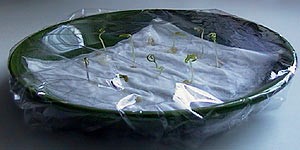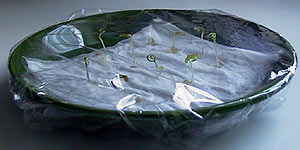New Year’s Day is coming up very quickly and now’s the time to start planning next year’s chile pepper harvest, if you haven’t started doing so already. If you don’t already have seeds on hand, Central has an excellent article on new seeds by Harald Zoschke. However, if you were smart enough to get seeds for Christmas and you want to cull the weak from the herd, here’s an excerpt from that story on how to test them out.
Once the seeds of the selected varieties are in hand, there are several easy culling techniques to increase germination percentage and potential seedling vigor. First, place the seed in a jar of water and discard any that float. These are damaged, partial seeds and those lacking embryos. Next, inspect the seed, preferably under a magnifying glass, and remove any that are undersized, shriveled, discolored, cracked, or otherwise damaged.

Some pepper growers, especially those who use direct seeding methods, like to know the expected germination percentage for each variety, so they conduct a germination test in the late winter. To conduct this test, place the seed between damp (not sopping wet) layers of paper towels, with no two seeds touching. Transfer the layers of towels to a plastic bag (preferably self-closing) and then set it on something warm, such as heating cables, or on top of the hot water heater or refrigerator. After two weeks have passed, enough time for the average pepper seed to sprout, open the bag and count the sprouted seeds. Divide the number of sprouted seeds by the total number of seeds used to arrive at the approximate germination percentage. There are seed testing laboratories in every state that will conduct this test for a fee, but allow the agency at least two months to run the test.
Latest posts by Mark Masker (see all)
- 2024 Scovie Awards Call for Entries - 07/07/2023
- 2024 Scovie Awards Early Bird Special: 3 Days Left - 06/29/2023
- 2024 Scovie Awards Early Bird Deadline Looms - 06/25/2023









